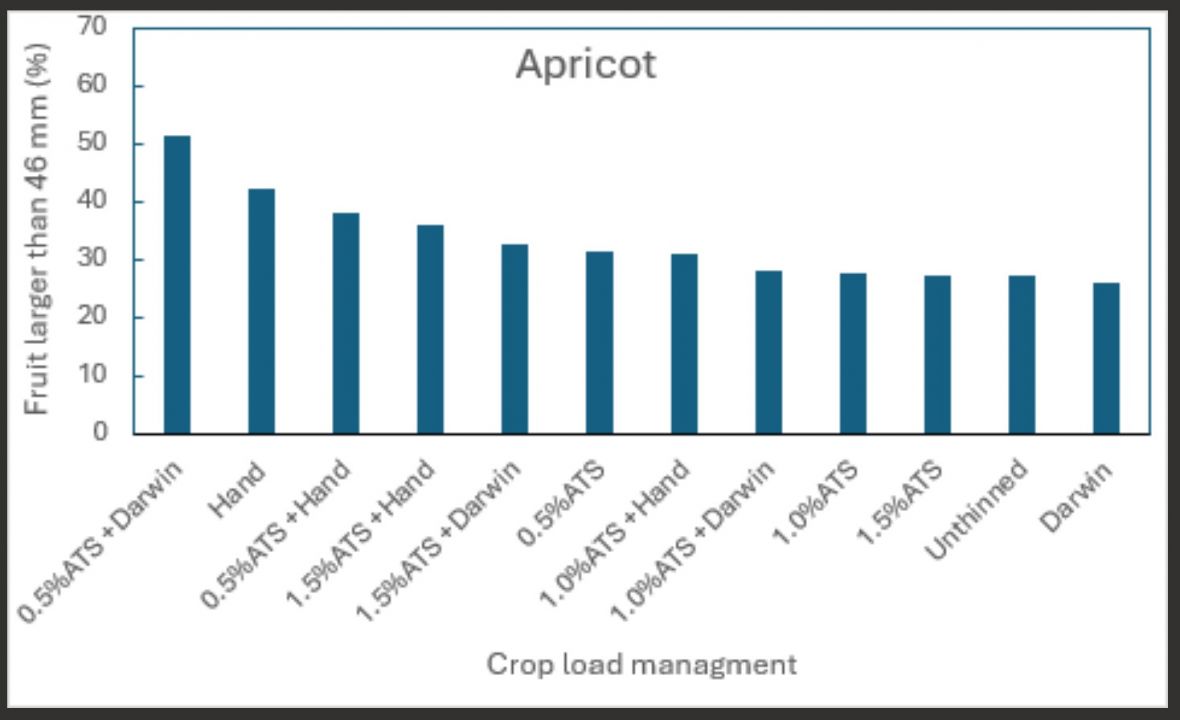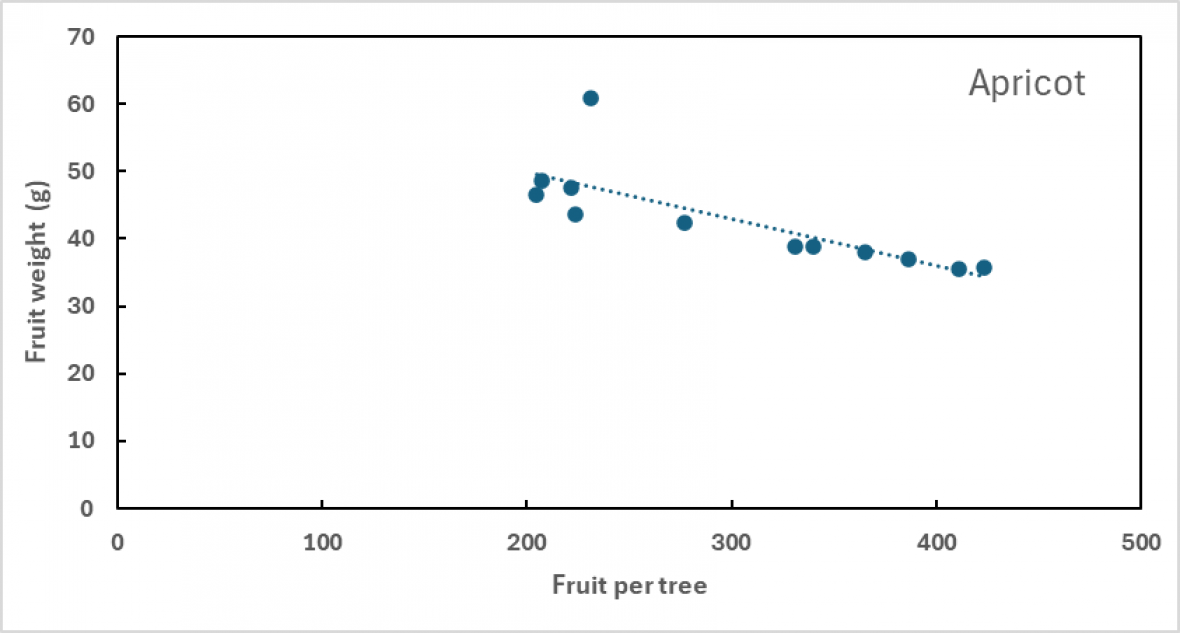Precision Agriculture and AgTech are being used to set crop load and measure fruit at harvest such as fruit size, fruit number, yield, and fruit quality distribution profiles of different crop load management practices (chemical, mechanical, hand thinning).
On this page:
- Introduction
- Video: Blossom thinning and impacts, example from apricot trials.
- 2024/25 season crop load results
- apricot 'Golden May'
- nectarine 'Rose Bright'
- peach 'August Flame'
- nectarine 'Autumn Bright'
- plum 'Angeleno'
Introduction
The project is developing profitable management strategies for summerfruit growers associated with temporal and spatial variation in crop load, fruit quality (fruit number per tree, fruit size and colour), and labour use efficiency.
Through trials at the Tatura SmartFarm, this project will demonstrate the value of precision crop information and data-driven spatial ‘zonal’ crop load management (chemical, mechanical and hand thinning) geared to tree size to provide fruit growers with objective data for decision-making.
Scans of commercial orchard blocks will provide ‘real world’ examples of spatial data on crop load, fruit size, fruit colour, yield and tree vigour and size.
AgTech trialled for measurements in the orchard:
- a ground based cartographer for scanning tree size, fruit size, fruit number and blossom loads,
- hand held smartphone apps to measure fruit size and fruit number,
- airbourne drone system to measure fruit number, fruit size, tree size and blossom loads.
Precision Agriculture on crop load trials:
- Cropload trials are occurring on apricot, plum, nectarine, and peach comparing
- the Darwin string mechanical thinner
- manual fruitlet thinning
- precision pruning and hedging
- chemical flower thinning
Blossom thinning and impacts, example from apricot trials
Video: Dr Mark O'Connell talks about blossom thinning in apricots in the Stonefruit Experimental Orchard at the Tatura SmartFarm (Autumn 2025)
Video transcript
Hello, it's Mark O'Connell from Ag Vic Tatura Smart Farm, and I'm standing in the Tatura Trellis experimental stone fruit orchard, and we're about to harvest our Golden May apricots. And what we've been doing this season is using AgTech and precision agriculture to set the crop load and measure the crop load and fruit size.
We have technologies like the ground base cartographer that scans the fruit and the trees. We have handheld apps that use the three camera systems and LiDAR systems and smart algorithms to determine fruit size, fruit number. And we're also testing, once we get it deployed, a airborne system using a drone to measure fruit number, fruit size, canopy size.
And what we've done this season, at the experimental stone fruit orchard, is use mechanical flower thinning with the Darwin thinner. We've used some chemical thinning systems, and we've used manual hand thinning, plus unthinned treatments. So, we're about to compare at harvest time, the final fruit size, final fruit number yield, and fruit distribution profiles of these different experimental treatments.
And now it's after harvest. We've had a chance to put that fruit over the fruit grader. We've also done orchard scans with the cartographer and produced heat maps of fruit size, fruit colour, fruit number, et cetera.
Looking at some of the data we can see we had a whole range of responses with fruit number per tree ranging from 200 fruit, a tree right through to 450 fruit per tree, and that induced a range of fruit sizes responses, and yield responses.
For example, the Darwin thin treatment plus plant growth regulator, ATS at a low rate, produced the least amount of fruit per tree, which responded in fruit size being larger at harvest, but at the penalty of a low yield.
Apricot case study
Blossom thinning using a combination of chemical thinners (ATS - a plant growth regulator) and mechanical thinner (Darwin string) increased final fruit size due to reduction in fruit number per tree.
Similarly, hand thinning at fruitlet stage produced a high proportion of large fruit (fruit diameter greater than 46 mm).
Chemical thinning alone (using ATS) at full bloom had minimal effect on final fruit number or fruit size in season 2024/25.
 Proportion of large fruit size in response to crop load management using various blossom and fruitlet thinning techniques in apricot 'Golden May' on Tatura Trellis at the Tatura SmartFarm, season 2024/25
Proportion of large fruit size in response to crop load management using various blossom and fruitlet thinning techniques in apricot 'Golden May' on Tatura Trellis at the Tatura SmartFarm, season 2024/25
 Fruit size and fruit yield in response to crop load management using various blossom and fruitlet thinning techniques in Apricot 'Golden May' on Tatura Trellis at the Tatura SmartFarm, season 2024/25
Fruit size and fruit yield in response to crop load management using various blossom and fruitlet thinning techniques in Apricot 'Golden May' on Tatura Trellis at the Tatura SmartFarm, season 2024/25
2024/25 season crop load results
Yield and fruit quality results from crop load studies:
Acknowledgements

This project Precision summerfruit orchards (SF23000) has been funded by Hort Innovation, using the Summerfruit research and development levy, contributions from the Australian Government and co-investment from Agriculture Victoria. Hort Innovation is the grower-owned, not-for-profit research and development corporation for Australian horticulture.
